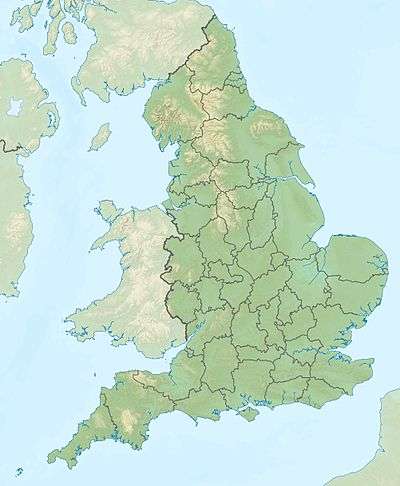Dudgeon Offshore Wind Farm
| Dudgeon Wind Farm | |
|---|---|
 Location of Dudgeon Wind Farm in England | |
| Country | England, United Kingdom |
| Location | 32km north of Cromer, Norfolk |
| Coordinates | 53°14′56″N 1°23′24″E / 53.249°N 1.39°ECoordinates: 53°14′56″N 1°23′24″E / 53.249°N 1.39°E |
| Status | Under construction |
| Commission date | 2017 |
| Owner(s) |
Statoil: 35% Masdar: 35% Statkraft: 30% |
| Wind farm | |
| Type | Offshore |
| Distance from shore | 32 km (20 mi) |
| Rotor diameter | 154 m |
| Power generation | |
| Units operational | 67 |
| Make and model | Siemens 6 MW |
| Nameplate capacity | 402 MW |
|
Website Dudgeon Offshore Wind Farm | |
Dudgeon Offshore Wind Farm is an offshore wind farm being developed 32 km north of Cromer off the coast of Norfolk, in the North Sea, England. It is owned by Dudgeon Offshore Wind Limited (DOW), a subsidiary of Statoil, Masdar and Statkraft. The site is a relatively flat area of seabed between the Cromer Knoll and Inner Cromer Knoll sandbanks and is one of the furthest offshore sites currently being developed around the UK.
The project includes constructing the wind turbines and their foundations, building an offshore substation and an onshore substation at Necton, installing power cables both undersea and onshore, as well as connection to the UK National Grid. This work is estimated to take about 2 years and cost in the region of £1.5bn. The wind farm should be fully operational by the end of 2017.
Planning
The project was originally developed by Warwick Energy Limited, who set up a subsidiary called Dudgeon Offshore Wind Limited. The wind farm planning application was filed in April 2009.[1] The application was for between 56 and 168 turbines depending on final chosen design with a nameplate capacity of 560 MW.[2]
In July 2012 the government gave planning approval for Warwick Energy to construct a wind farm to the capacity of 560MW.[3] In October 2012 Statoil and Statkraft acquired the Dudgeon Offshore Wind Farm project through the acquisition of all shares from Warwick Energy.[4] A review of the project was undertaken after the project was acquired by Statoil and Statkraft, and in December 2013 it was announced that the capacity of the wind farm would be reduced from 560MW to 402MW.[5]
In January 2014 it was announced that two contracts had been awarded to Siemens for the engineering, supply, assembly, commissioning and service of 67 6MW wind turbines for the project.[6] Statoil and Statkraft made the final investment decision on 1 July 2014 and announced that they would proceed with the project.[7]
In September 2014 it was announced that Masdar had purchased 35% of Statoil's shares in Dudgeon Offshore Wind Limited. Statoil now holds a 35% share, Masdar a 35% share and Statkraft a 30% share in Dudgeon Offshore Wind Limited. [8]
Construction
Work began onshore in Norfolk to install the underground cables and construct the substations on March 26, 2015.[9] The turbine foundations will be laid in 2016, with turbine installation occurring in 2017, and final commissioning at the end of 2017.[7]
References
- ↑ Dudgeon, www.4coffshore.com
- ↑ "UKWED Offshore wind farms". RenewableUK. Retrieved 2011-02-24.
- ↑ "Wind farms off East coast approved by government". BBC. 6 July 2012. Retrieved 30 January 2014.
- ↑ "Statoil and Statkraft acquire Dudgeon offshore wind power project". www.statoil.com. 17 October 2012. Retrieved 30 January 2014.
- ↑ "DECC Consent Granted for Dudgeon Offshore Wind Farm Planning Variations". dudgeonoffshorewind.co.uk. 23 December 2013. Retrieved 30 January 2014.
- ↑ "Dudgeon Offshore Wind Farm contracts to Siemens plc". www.statoil.com. 14 January 2014. Retrieved 30 January 2014.
- 1 2 "Norwegians green light Dudgeon". reNEWS. 1 July 2014. Retrieved 22 July 2014.
- ↑ "Masdar Invests In Offshore Wind Farm; Expanding Its Presence In The UK Wind Energy Market". Masdar website.
- ↑ "Onshore work kicks off at Dudgeon". reNEWS. 26 March 2015. Retrieved 5 May 2015.
